You Deserve a Great Mummy, So Here’s My Favorite: The Mummy ‘59
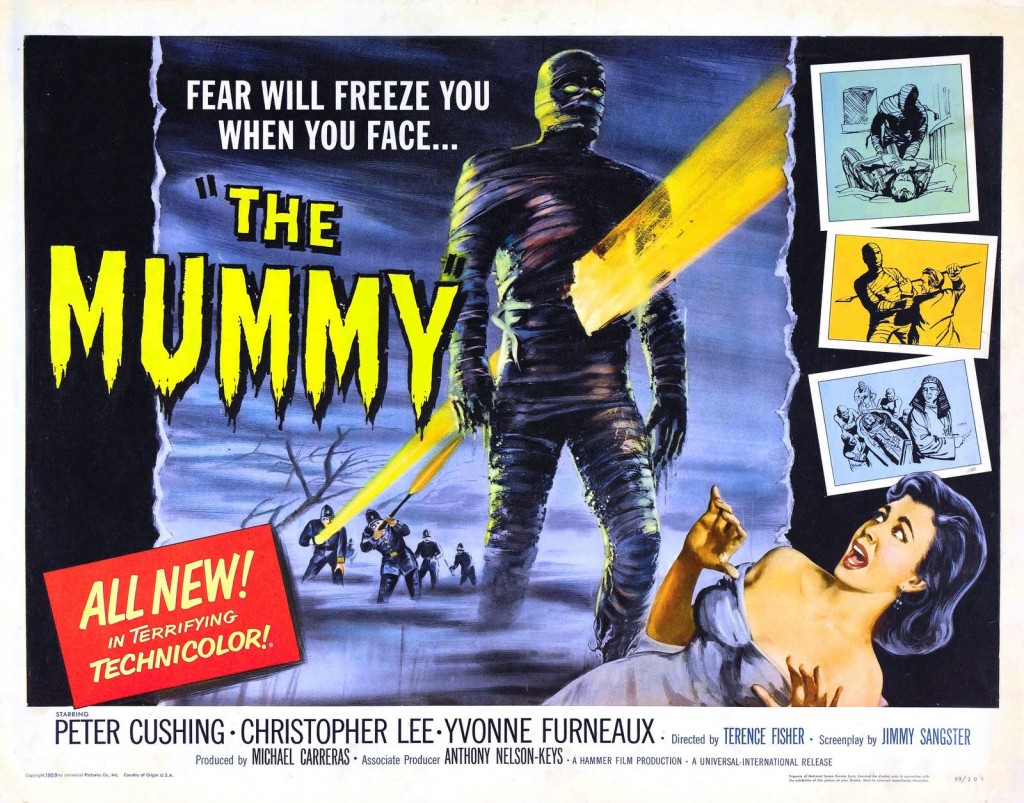 My short take on The Mummy unleashed to theaters last week as the start of Universal’s “Dark Universe” franchise gamble: It’s an embarrassment for everyone involved. Except maybe Sophia Boutella as Princess Ahmanet. She deserves a real mummy film, not a schlock Tom Cruise action picture only interested in selling later movies. The Mummy ‘17 is ugly, confused, stupid, and boring. North American moviegoers decided to watch Wonder Woman again rather than see Universal trash its own legacy: The Mummy opened to a glum $32 million domestically, putting it almost $25 million behind Wonder Woman’s second weekend. However, The Mummy is targeting international revenue (one of the reasons Universal allowed the criminally miscast Tom Cruise into the room), and so far it’s grossed $141 million in foreign markets. The “Dark Universe” will proceed, but under a bleak curse.
My short take on The Mummy unleashed to theaters last week as the start of Universal’s “Dark Universe” franchise gamble: It’s an embarrassment for everyone involved. Except maybe Sophia Boutella as Princess Ahmanet. She deserves a real mummy film, not a schlock Tom Cruise action picture only interested in selling later movies. The Mummy ‘17 is ugly, confused, stupid, and boring. North American moviegoers decided to watch Wonder Woman again rather than see Universal trash its own legacy: The Mummy opened to a glum $32 million domestically, putting it almost $25 million behind Wonder Woman’s second weekend. However, The Mummy is targeting international revenue (one of the reasons Universal allowed the criminally miscast Tom Cruise into the room), and so far it’s grossed $141 million in foreign markets. The “Dark Universe” will proceed, but under a bleak curse.
Okay, I’m finished with that movie. Healing time. I shall now read from the Scroll of Life, brew tana leaves, and bring back the sleeping Gods of Egypt with what I consider the high point of eighty-five years of movies about the undead of the Nile River Valley: 1959’s The Mummy from Hammer Films Productions.
The Alchemical Feat of The Mummy ‘59
“The Mummy made by Hammer Films is, in my opinion, one of the best films of its kind that British cinema has made.” — Christopher Lee
Because it stands in the shadow of Hammer’s first two Gothic hits, The Curse of Frankenstein (1957) and Dracula/Horror of Dracula (1958), it’s easy to gloss over The Mummy as merely a good Hammer horror film rather than one of the greats. But since it debuted on Blu-ray in the U.S., I’ve come to the realization I prefer The Mummy ‘59 to the famous 1932 Boris Karloff-Karl Freund film. I didn’t believe this was possible: The Mummy ‘32 is on my shortlist of Universal’s best classic monster movies. But watching the Hammer version in a pristine Hi-Def restoration, the vibrancy of its colors and designs rescued from dull DVD transfers, I had to face my emotions honestly and embrace it as My Favorite Mummy.
After the success of The Curse of Frankenstein and Dracula, Universal opened up its vaults to Hammer, allowing the British studio to take the five previous mummy films — primarily the four installments of the Kharis series — and use the best bits. It’s a Frankenstein Monster experiment, but the work of director Terence Fisher, screenwriter Jimmy Sangster, and producers Michael Carreras and Anthony Nelson-Keys blended these ideas into a vibrant new Egyptian horror experience. It wasn’t only the addition of color that made this Mummy stand out in 1959.
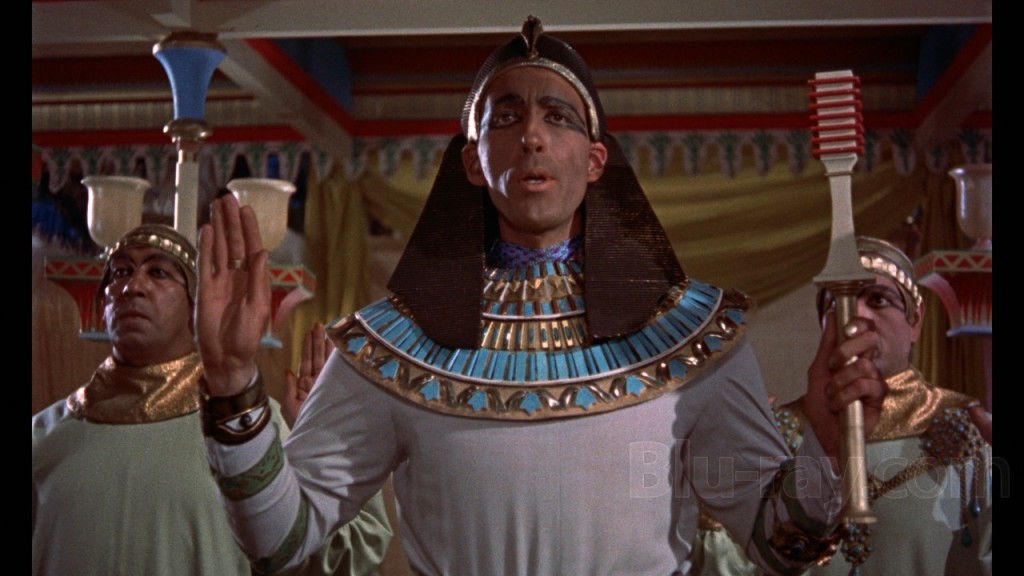 Jimmy Sangster, a major player in Hammer’s Gothic success, based his script on the second Kharis film, The Mummy’s Tomb (1942). Years after archaeologist Stephen Banning (Felix Aylmer) discovered the tomb of the Princess Ananka in Egypt and accidentally unleashed the living mummy of Ananka’s condemned lover, the high priest Kharis (Christopher Lee), the current high priest of Karnak, Mehmet Bey (George Pastell), brings Kharis to Banning’s home country. Mehmet Bey animates Kharis and sends the silent mummy to throttle Banning, his son John (Peter Cushing), and the others who desecrated the tomb of Princess Ananka.
Jimmy Sangster, a major player in Hammer’s Gothic success, based his script on the second Kharis film, The Mummy’s Tomb (1942). Years after archaeologist Stephen Banning (Felix Aylmer) discovered the tomb of the Princess Ananka in Egypt and accidentally unleashed the living mummy of Ananka’s condemned lover, the high priest Kharis (Christopher Lee), the current high priest of Karnak, Mehmet Bey (George Pastell), brings Kharis to Banning’s home country. Mehmet Bey animates Kharis and sends the silent mummy to throttle Banning, his son John (Peter Cushing), and the others who desecrated the tomb of Princess Ananka.
Sangster stirred up The Mummy’s Tomb with borrowings from the other Kharis films. The story opens in Egypt, doing a compressed version of events of The Mummy’s Hand (1940). Ananka is reincarnated as a modern women, a concept introduced in the last two Kharis movies, and here worked into the story so John Banning’s wife Isobel (Yvonne Furneaux) is apparently Ananka’s living avatar. (In The Mummy’s Tomb, Isobel attracts the lust of the high priest and has no connection to Kharis at all.) The mummy rising from the mud of a swamp — and sinking back into it — is also taken from the last two Kharis films.
Sangster further sweetened the deal by borrowing from The Mummy ‘32: The character of Sir Joseph Whemple (Raymond Huntley, who played Dracula on stage in the 1920s); reading the Scroll of Life rather than using tana leaves; and a scene where the first appearance of the mobile mummy drives a man to insanity — in this case, Stephen Banning. Most significantly, The Mummy ‘32 provides The Mummy ‘59 with its mystical elements and aura of a vanished epoch, elements lacking in the 1940s films.
Hammer contributes its emerging Gothic style to the gumbo of story ideas. Instead of the modern age, the events are set in 1898. The art direction of Bernard Robinson, prime architect of the “Hammer Look,” creates sumptuous and colorful visuals. Under the guidance of director Terence Fisher, the action is florid and often violent, a contrast to the languid and dreamy approach of 1930s Universal. But The Mummy ‘59 doesn’t sacrifice mystery and mood. A film this gorgeous (Christopher Lee called it “the most beautiful looking film that Hammer ever made”) and containing such rich performances can’t help but luxuriate in mood.
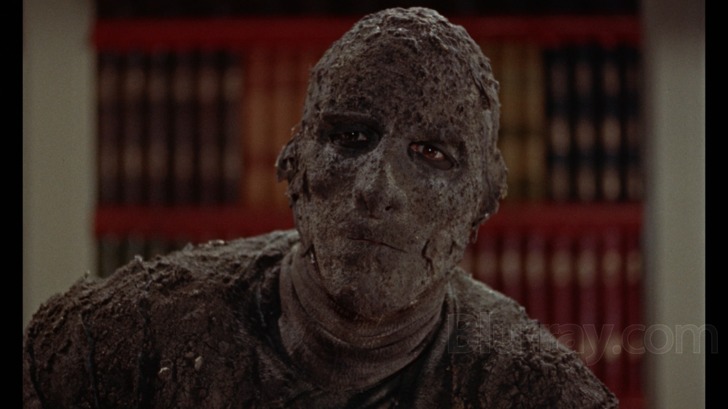 He Who Robs the Tombs of Egypt — Dies!
He Who Robs the Tombs of Egypt — Dies!
Let’s talk about those performances. Two, mostly. You can guess which two.
As Kharis, Christopher Lee set the bar impossibly high for future mummy actors. Boris Karloff may be the best mummy, but Lee is the best of the “tomb-wrapping” mummies. The stereotype of the bandaged mummy is that it’s so pathetically slow people in comas could outpace it. Lee demolishes that. His mummy is an undead fury moving with violent jerks like a broken wind-up toy. Even when standing still, Kharis is a looming terror. The sight of this rotting creature battering down doors and tearing apart iron bars to reach victims is awesome to witness. The horror comes from how easy it is for viewers to put themselves in the place of the victims as the sight of Kharis lunging for them turns them to jelly.
The part was a rough one for Lee: he suffered from powder burns, dislocated his shoulder bashing open a door in the film’s best shock moment, and pulled his back muscles carrying Yvonne Furneaux around the swamp set. He later said he understood Lon Chaney Jr.’s lack of affection for the part — although Lee maintained an immensely high opinion of the film.
We can put some of the blame for Christopher Lee’s pain on the explosive direction of Terence Fisher. Fisher was instrumental in bringing athletic violence to Hammer Horror, focusing on the monsters as feral and ferocious. His directorial style seems low-key compared to today, but in 1959 seeing the mummy smash through a glass door, seize a man by the throat, and then hurl him over a desk … well, that was new. Much of The Mummy is done with elegance and Romanticism, but when it needs to go full horror, it achieves it.
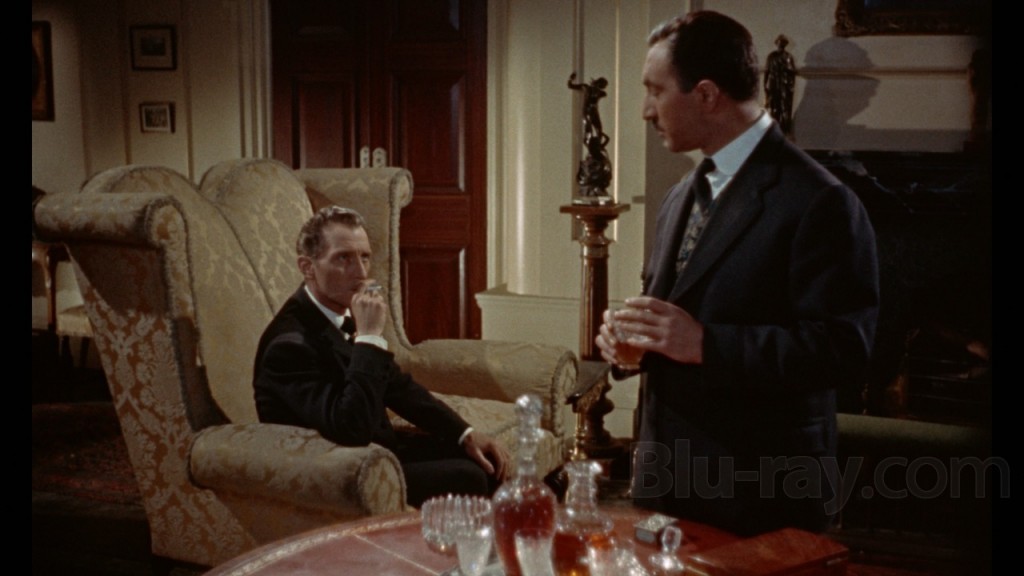 As enthralling as Lee’s physicality is, his subtle portrayal of Kharis’s tragedy is what’s truly stunning. Kharis appears in mortal form (and still in possession of his tongue) during the lengthy mid-movie flashback to his origin in ancient Egypt. These scenes set up Kharis’s humanity, and when his undead form encounters his love Ananka — now in body a Victorian woman — Lee’s silent acting with his eyes and hands is heart-rending. This moment, interrupting Kharis trying to strangle John Banning, is the film’s most magnificent. The ability to emote through a mound of makeup and heavy costuming is a rare gift, but Christopher Lee was a rare performer.
As enthralling as Lee’s physicality is, his subtle portrayal of Kharis’s tragedy is what’s truly stunning. Kharis appears in mortal form (and still in possession of his tongue) during the lengthy mid-movie flashback to his origin in ancient Egypt. These scenes set up Kharis’s humanity, and when his undead form encounters his love Ananka — now in body a Victorian woman — Lee’s silent acting with his eyes and hands is heart-rending. This moment, interrupting Kharis trying to strangle John Banning, is the film’s most magnificent. The ability to emote through a mound of makeup and heavy costuming is a rare gift, but Christopher Lee was a rare performer.
Peter Cushing anchors the story from the non-Egyptian side, and you can never ask for a better anchor than Peter Cushing. It’s a less flashy or complex role than others that Hammer’s biggest star was delivering at the time: John Banning is no Van Helsing, Dr. Frankenstein, or Sherlock Holmes. This might be considered a mark against the film (“Inefficient Use of Peter Cushing: Two Yard Penalty!”) but come on … Cushing takes the bland hero part of earlier Mummy flicks and does something with it. Nobody has the authority to deliver exposition the way Cushing can. Hearing him narrate an Egyptian flashback isn’t only a pleasure. It’s an honor.
Cushing gets a juicy scene when John Banning visits Mehmet Bey in order to trick the high priest into acting too hastily with the next mummy attack. Banning needles Mehmet Bey by calling his religion a heap of bull in a condescending British Imperial sneer masquerading as politeness. Cushing is masterful in this scene at being a supercilious yet cunning rotter — shadings of his Victor Frankenstein:
John Banning: Karnak wasn’t a particularly important deity. A third-rate god … He had nothing to commend him to anyone with the slightest degree of intelligence.
Mehmet Bey: But surely you are assuming a great deal.
John Banning: I don’t think so. I made an extensive study of this so-called religion. It’s based on artificial creeds and beliefs, some of them ludicrous in the extreme.
Mehmet Bey: Did it ever occur to you that beneath the superficial you’ve learned about, there could be a great and passionate devotion to this god?
John Banning: It occurred to me. But I dismissed it.
Mehmet Bey: You’re intolerant, Mr. Banning.
John Banning: Not intolerant. Just practical.
Simply the way Cushing says “I don’t think so” is gold. Credit also to George Pastell as Mehmet Bey, boiling with unspoken rage while plotting how he can get Kharis to rip this fellow apart.
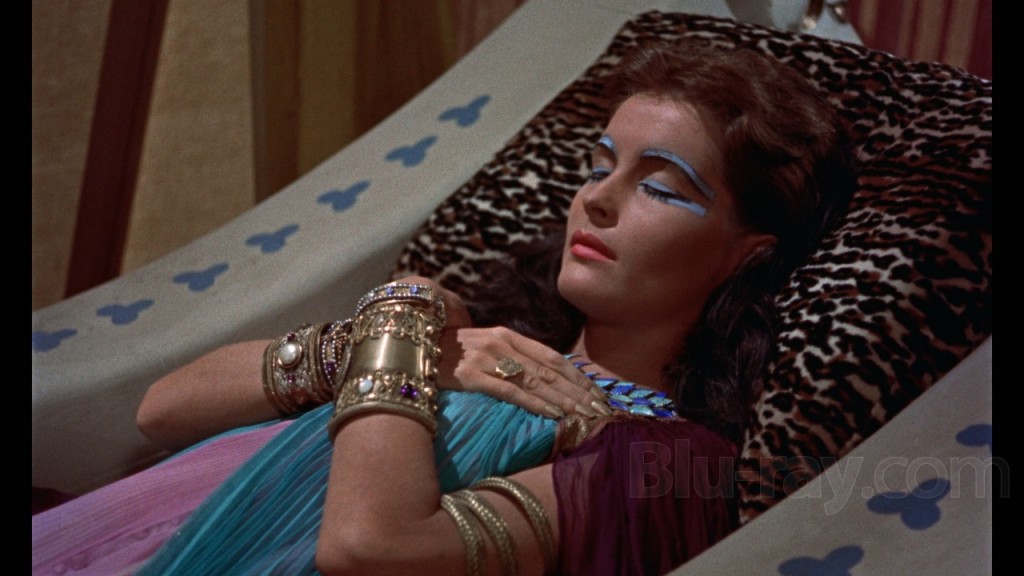 Music of the Land of the Pharaohs
Music of the Land of the Pharaohs
You’ll excuse me if I dedicate extra space to The Mummy’s musical score. I think it deserves special attention. In his introduction to the iTunes release of the score (part of which I quoted at the top of the post), Christopher Lee said, “I think the music of The Mummy is greatly superior to all the other music in any Hammer film.”
Now that is gargantuan praise. And it’s unusual because the score isn’t by Hammer’s most famous composer, James Bernard. Bernard was occupied with The Hound of the Baskervilles and The Stranglers of Bombay in 1959; musical director John Hollingsworth hired Franz Reizenstein to score The Mummy. A German-born Jew, Reizenstein fled from the Nazis in 1934 and later became a British citizen. He worked mostly on concert hall pieces, and composed only three films scores, all in the span of 1959–60. The Mummy was his sole work for Hammer.
Back to the big question: Is Christopher Lee correct that this is the best score to any Hammer film? Better than those masterpieces by James Bernard?
My answer — mindful of how much I love the music of James Bernard — is yes, absolutely. There’s a unique power to Reizenstein’s score to The Mummy that stands out among the Hammer canon. The moment his main Egyptian motif swells up as the film’s title appears, the music sweeps audiences into an impossibly remote and romantic time. It’s counterpunctual music; it isn’t specifically a “horror” score accentuating fright. It leaves the images to do that job while it emphasizes Kharis’s humanity and the Egyptian world, becoming the voice of the tongueless dead. Perhaps Christopher Lee felt such adoration for the score because of how it benefits his performance. This is most apparent when Kharis first recognizes his lost love in Isobel, i.e. the best scene in the film. The music turns an already great moment into a transcendent one — as if the Gods themselves were singing.
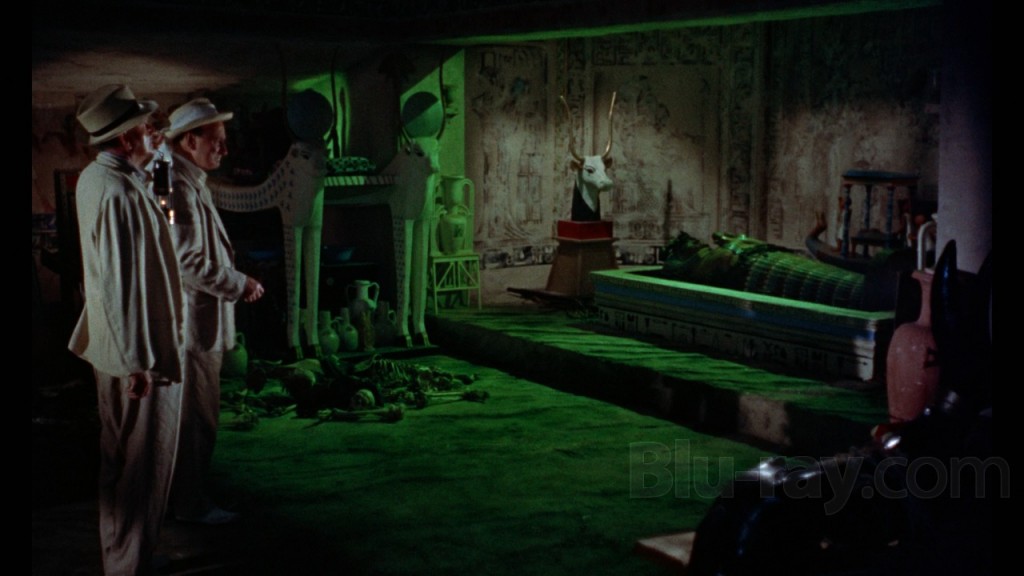 So yes: best Hammer Film score. I’m going to stand by Sir Christopher Lee on that. In fact, this might be the element of The Mummy ‘59 that finally edges it past The Mummy ‘32 in my personal canon. Like many films from the early sound era, The Mummy ‘32 contains almost no music, only a few short pieces for transitions and a Swan Lake excerpt over the credits. The minimal score doesn’t hold the movie back while I’m watching it, but when Hammer’s Mummy envelopes me with the romanticism of music, it’s impossible not to tip the scales of Osiris in its favor. Ancient Egypt needed a Franz Reizenstein or a Jerry Goldsmith for the final touches.
So yes: best Hammer Film score. I’m going to stand by Sir Christopher Lee on that. In fact, this might be the element of The Mummy ‘59 that finally edges it past The Mummy ‘32 in my personal canon. Like many films from the early sound era, The Mummy ‘32 contains almost no music, only a few short pieces for transitions and a Swan Lake excerpt over the credits. The minimal score doesn’t hold the movie back while I’m watching it, but when Hammer’s Mummy envelopes me with the romanticism of music, it’s impossible not to tip the scales of Osiris in its favor. Ancient Egypt needed a Franz Reizenstein or a Jerry Goldsmith for the final touches.
“I’ve spent the better part of my life amongst the dead”
Producer Michael Carreras was never fond of the horror films he produced for Hammer. He saw them as a fad, something to fatten the studio coffers until branching out into other genres. It was Carreras who pushed for making films like She and One Million Years B.C. But according to people who knew him, he enjoyed working on The Mummy immensely. Perhaps he looked at the film through the lens of the historical epic that was the current form of blockbuster moviemaking. On a small budget, Carreras corralled a team to make a horror film with overtones of a Cecil B. de Mille movie — except much, much better.
The Mummy is terrific as horror thanks to Terence Fisher’s direction and Christopher Lee’s shockingly dangerous title character. It also thrives as a mini-historical epic, a tragic tale of lost love, and an excuse for Peter Cushing to Peter Cushing all over the place while Franz Reizenstein picks up the orchestra and shreds. All this may not push The Mummy ‘59 to the top of your personal mummy pile … but it does for me.
Ryan Harvey is one of the original bloggers for Black Gate, starting in 2008. He received the Writers of the Future Award for his short story “An Acolyte of Black Spires,” and his stories “The Sorrowless Thief” and “Stand at Dubun-Geb” are available in Black Gate online fiction. A further Ahn-Tarqa adventure, “Farewell to Tyrn”, is currently available as an e-book. Ryan lives in Costa Mesa, California where he works as a professional writer for a marketing company. Occasionally, people ask him to talk about Edgar Rice Burroughs or Godzilla in interviews.
I have to admit that as much as I love Karloff’s portrayal of Imhotep, the Lee/Cushing Mummy is a better film.
I hear what you’re saying, and there is much merit to it, but, perhaps for sentimental reasons as much as the film itself, I still prefer the 1932 Karloff version.
Blasphemy, sheer blasphemy! Next you’ll be telling us that Captain Kronos Vampire Hunter beats out Bela.
This is a fun one, though – probably my favorite Hammer. Lee is the most incredibly vigorous Mummy ever; it’s like he spent 3,000 years on a stairmaster.
@Thomas – You know, I would pay a ridiculous amount of money to see Captain Kronos vs. the “Twilight” kiddies. A ridiculous amount.
There’s part of me that wishes they’d used authentic Egyptian wrapping practices (i.e. no separate bindings for individual arms & legs); then Lee would’ve brought more of a Chinese hopping vampire aspect to his movement.
But in retrospect, it’s probably better that they didn’t ask me.
@Joe – They get a few other authentic Egyptian practices wrong. Such as that last image: Egyptians rarely buried their dead with green gel lights! I’ll give Bernard Robinson and the rest of the art team a pass on that.
As far as Twilight, I honestly wish Stephen King’s publisher would reissue ‘Salem’s Lot with a new cover designed to appeal to the Twilight crowd. Can you imagine their reaction to vampires as they are supposed to be, instead of sparkly freaks?
@Amy – This something I’ve recently thought about. Is there still a “Twilight crowd”? With the final film adaptation of few years in the past, it feels as if the Twilight viewers and readers grew up and moved on. I don’t think Twilight will have much lasting cultural impact. A good comparison is the Harry Potter series, which I’m sure will maintain a mighty fan base forever. Twilight is an example of how faddish mediocrity can seize the moment and become popular — but the mediocrity will catch up to it eventually and cover it over with a sandstorm that lasts for a whole year … wiped clean by the wrath of quality.
Green gel lights make everything better! A strategically-placed green gel light showed Walter Slezak to be an evil wizard in Sinbad the Sailor!
Excellent point, Ryan.
[…] You Deserve a Great Mummy, So Here’s My Favorite: The Mummy ‘59 by Ryan Harvey – https://www.blackgate.com/2017/06/17/you-deserve-a-great-mummy-so-heres-my-favorite-the-mummy-59/ […]
[…] You Deserve a Great Mummy, So Here’s My Favorite: The Mummy ‘59 by Ryan Harvey – https://www.blackgate.com/2017/06/17/you-deserve-a-great-mummy-so-heres-my-favorite-the-mummy-59/ […]